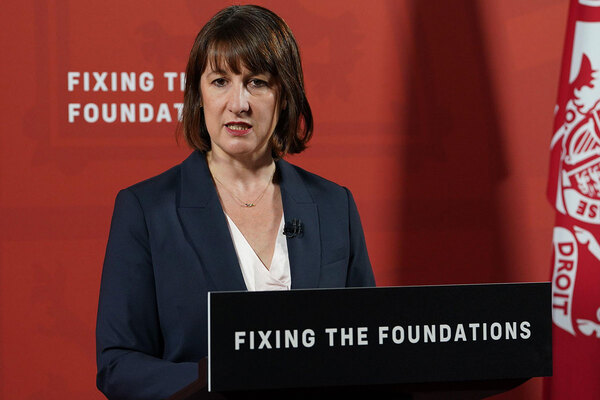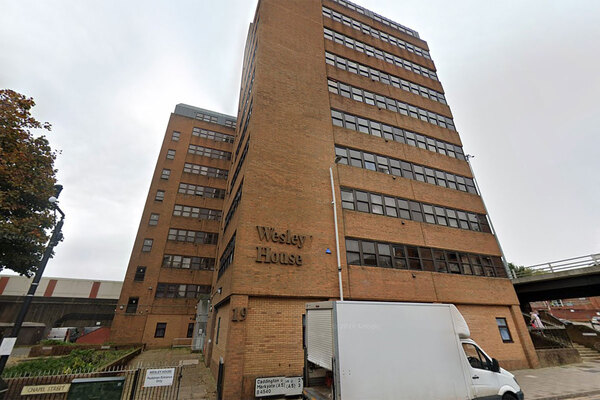You are viewing 1 of your 1 free articles
Do signs point to a shift in the Treasury’s thinking on housing investment?
Inside Housing columnist Jules Birch analyses the UK Housing Review Autumn Briefing Paper
With the days counting down to the Budget, there are some hopeful signs amid the gloom about the public finance.
Reports suggest a top-up of between £500m and £1bn to the current Affordable Homes Programme (AHP) could be on the cards. This will be welcome news if correct, even it is some way short of the promised “council housing revolution” and will only make up for some of the shortfall in forecast output.
The real question for 30 October – and for the Spring Spending Review and new AHP to come – is a more long-term one: a shift in thinking about the value of housing investment.
There have already been some positive signs on this, with chancellor Rachel Reeves said to be considering a shift in the measure of debt to take account of the value of the assets created by investment, as well as the costs. This could create room for billions in extra public investment, but housing would have to join the queue alongside health, education, transport, prisons and all the other government priorities.
If you’re looking for reasons to invest in housing specifically, there is plenty of timely evidence in the new UK Housing Review Autumn Briefing Paper published last week.
The best place to start is with the fact that, counter-intuitively for many people after years of austerity, government spending on housing is now at its highest ever level in real terms.
The graph below, based on figures calculated by economist Ralph Mould, one of the contributors to the briefing paper, shows the comparison between 2021-22 and 1975-76, when investment in council housing had reached a peak.
The difference lies of course in the breakdown of the spending, with 88% now going on housing benefit compared with 95% going on buildings in the 1970s.
As the graph shows, that long-term shift from bricks and mortar to personal subsidies saved money in the past century, but is costing steadily more in this one as housing benefit ‘takes the strain’ of higher rents.
Mr Mould argues that the only way to stabilise overall spending in the long term will be to increase supply subsidies. However, making that case to the Treasury is challenging given the higher initial capital costs.
Another in favour of more investment is the contribution that will be needed from affordable housing to meet the government’s manifesto target of 1.5 million new homes over the next five years.
As John Perry, one of the authors of the paper, points out: even if (a big if) house builders succeed in boosting their output from 170,000 in 2022-23 to 260,000 by 2029-30, it will still leave a shortfall of 90,000 homes to be made up from elsewhere.
This should be food for compulsory thought ahead of decisions on the next Affordable Homes Programme that will be made in the 2025 Spending Review.
Another piece of evidence might come from valuing the assets created, as well as the costs incurred.
All that previous investment has helped to create a social housing stock worth more than £500bn (a conservative estimate by Savills) and generated Right to Buy receipts of more than £50bn on top of that. Not a bad return.
The return from the billions spent on housing benefit is harder to assess. Some of it has supported the development of new social homes by covering higher rents and it has perhaps also given confidence to build-to-rent investors.
But it has also helped to create a private rented stock worth £1.6tn, all of it owned by private individuals and companies, some of it former council homes sold under the Right to Buy. Private renting may play a crucial role in our broken housing system, but where is the return on all that public spending?
On current forecasts, the housing benefit bill will rise to more than £35bn by the late 2020s, the exact five-year period that is the focus of current Budget calculations. This is despite all the cuts and caps brought in to reduce it, one of them the focus of fierce debate ahead of 30 October.
“Private renting may play a crucial role in our broken housing system, but where is the return on all that public spending?”
A renewed freeze in Local Housing Allowance (LHA) is already baked in to spending plans from April 2025 and any thaw to allow uprating will mean spending extra money.
But official figures released this week show that private rents rose by 8.4% in the year to August, five times the rate of general price inflation, so failing to uprate LHA will leave claimants with instant and significant shortfalls against their rent.
Research by the Joseph Rowntree Foundation published last week shows that private renters are already an average of almost £700 a year worse off as a result of freezes and restrictions in LHA since 2011 and could lose another £243 if rates are frozen next year.
Costs will also spiral for local authorities, some of which have already been pushed to the brink of bankruptcy by rising costs for temporary accommodation.
As contributor Francesca Albanese points out, one short-term fix in the Budget would be an increase in the temporary accommodation subsidy cap, which has been frozen since 2011, but again that would mean more money.
The solution may seem obvious but, as co-author Mark Stephens argues, social housing supply will have to increase before the pressure on housing benefit is eased.
Read the briefing paper in full for a review of all those arguments and more.
The final decisions are now being taken inside the Treasury. Does it really want more of the same, or is it ready for long-term reform?
Jules Birch, columnist, Inside Housing
Sign up for our daily newsletter
Already have an account? Click here to manage your newsletters













